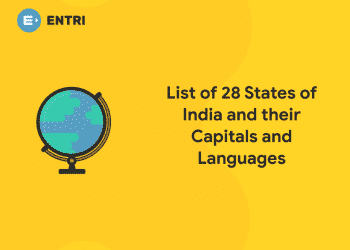Table of Contents
Introduction
Are you gearing up for your first technical interview at HCL Technologies? Whether you’re a fresh graduate or a newcomer to the tech industry, preparing for the Python interview can feel overwhelming. But here’s the good news: with the right approach and solid preparation, cracking the interview is absolutely doable. Python remains one of the most sought-after skills across IT companies, with HCL especially valuing candidates who demonstrate practical problem-solving skills combined with a strong understanding of core Python concepts.
Getting ready for your HCL interview means more than just memorizing answers—it’s about truly understanding Python’s ecosystem, from basics to advanced topics, and showcasing a mindset that aligns with HCL’s culture of innovation and ideapreneurship. This comprehensive guide features 50 carefully curated Python interview questions for freshers, enriched with meaningful tips and clear explanations to make your preparation both effective and enjoyable.
What Makes This Guide Different?
1: Which of the following data types is immutable in Python?
- 50 up-to-date interview questions reflecting the latest in Python and HCL’s expectations for 2025
- Clear, concise answers with real-world examples and coding snippets
- Helpful tips sprinkled throughout to clarify concepts quickly
- Coverage from Python basics to advanced topics like async programming, error handling, and testing frameworks
- Coding challenges you might face at HCL along with strategic insights on tackling them
- A special section highlighting Entri’s AI-powered Python course crafted to boost your skills and landing your dream job at HCL
🚀 Start Coding Today! Enroll Now with Easy EMI Options. 💳✨
Gain expertise in Django and open doors to lucrative opportunities in web development.
Start Learning With EMI Payment OptionsHCL Interview Preparation Tips: Align With Company Culture
- Show your ideapreneur mindset: HCL values innovation and self-driven problem-solving. Prepare to demonstrate through examples how you learn from mistakes and come up with creative ideas.
- Brush up on coding practice: Expect coding rounds with real-time problem solving. Practicing algorithmic questions using Python is key.
- Stay updated with frameworks: Flask, Django, and automation tools like pytest are increasingly important.
- Understand data structures and libraries: Pandas, NumPy, and data manipulation basics are often tested.
- Soft skills matter: Communication, teamwork, and adaptability are assessed especially in HR and group discussion rounds.
50 Essential HCL Python Interview Questions and Answers 2025
1. What type of language is Python?
Python is a high-level, interpreted programming language that supports multiple programming paradigms including procedural, object-oriented, and functional programming. It is dynamically typed, which means you don’t need to declare variable types explicitly; these are inferred at runtime. Python’s interpreted nature allows you to run code directly without prior compilation, making it excellent for rapid development and testing. It is renowned for its easy syntax that reads similarly to English, which significantly reduces the learning curve and helps developers focus on solving problems rather than understanding complex language rules. Python’s extensive standard library and active community contribute to its versatility in web development, automation, data science, artificial intelligence, and more.
2. What is PEP 8, and why is it important?
PEP 8 is the official style guide for Python code. It establishes conventions on how Python code should be formatted to maximize readability and maintainability. Adhering to PEP 8 standards ensures that code written by different developers follows a uniform style, reducing confusion in collaborative projects. It provides guidelines on indentation, variable naming, line length, spacing, imports organization, and more. Writing PEP 8-compliant code results in a professional, clean codebase that is easier to debug and update, which is critical in large-scale projects especially in companies like HCL where teamwork and scalability matter.
3. Explain the concept of namespace in Python.
A namespace in Python is a mapping between names (identifiers like variable and function names) and objects. It is essentially a container where names are stored and associated with objects they refer to. Namespaces help avoid naming conflicts by segregating names based on their scope. For example, built-in functions reside in the built-in namespace, variables defined locally within a function belong to the local namespace, and global variables exist in the global namespace. When Python encounters a name, it resolves it by searching the namespaces in a predefined order (local → enclosing → global → built-in). Understanding namespaces is crucial for managing variable scope and avoiding bugs due to name clashes.
4. What is PYTHONPATH?
PYTHONPATH is an environment variable that augments the default search path used by the Python interpreter to locate modules and packages. By default, Python searches for modules in standard directories like the current directory and installed library paths. However, setting or modifying PYTHONPATH allows you to add additional directories where custom or third-party packages reside. This flexibility helps organize projects and facilitates code reuse across various applications without installing modules globally. Adjusting PYTHONPATH is especially useful when working on multiple projects requiring different module versions or development setups.
5. Define Python modules and packages.
A module is a single Python file (.py) containing definitions of functions, classes, and variables that can be imported and reused within other Python programs. Modules promote code modularity, making code easier to maintain and reuse. A package is a directory that contains multiple related modules along with an __init__.py file, allowing hierarchical structuring of modules under a common namespace. Organizing code into packages facilitates large-scale project management by logically grouping related functionalities, and it simplifies importing modules with dot notation (e.g. package.module).
6. Differentiate between local and global variables.
- Local variables are defined and accessible only within the function or block where they are created. They are instantiated when the function executes and destroyed once it finishes.
- Global variables, in contrast, are declared outside all functions and accessible from any part of the program unless shadowed by local variables of the same name. Global variables maintain their value throughout the program’s execution. Proper handling of global vs local scopes is key to avoiding unintended side effects during execution.
7. What is Flask? List some benefits.
Flask is a lightweight, micro web framework written in Python, designed for building web applications quickly and easily. It provides core functionalities such as URL routing, request and response handling, and templating through Jinja2 without imposing heavy dependencies. Some key benefits of Flask include:
- Minimal setup with flexibility to integrate any extensions or libraries as needed.
- Supports unit testing out of the box for reliable code.
- An integrated debugger helps identify issues during development.
- Friendly to beginners for learning web development.
- Enables developers to build both simple and complex web applications by customizing components.
8. Django versus Flask: Which should you use?
Django and Flask serve different needs:
- Django is a full-stack framework packed with features like an ORM, authentication, an admin panel, and scalable architecture, making it ideal for building large and complex applications quickly with convention over configuration.
- Flask offers complete control with fewer features out of the box, making it suitable for smaller projects or when precise customization is required.
Choose Django if you want an all-in-one solution and prefer rapid development with predefined components. Opt for Flask if you seek simplicity, flexibility, or want to learn core concepts before scaling up.
9. Explain Django’s MVT architecture.
Django follows the Model-View-Template architecture pattern:
- Model: Represents the data layer and defines the database structure using Python classes. It manages data querying, insertion, and validation.
- View: Acts as a bridge between models and templates. It processes user requests, retrieves data from models, and determines which template to render.
- Template: Handles the presentation layer. It comprises HTML files embedded with Django Template Language used to dynamically display content.
This clear separation promotes maintainability and clean code organization.
10. What is scope in Python? Describe the different types.
Scope determines the accessibility period and region of a variable or name:
- Local scope: Variables declared inside a function, only accessible within that function.
- Enclosing scope: For nested functions, the scope of the outer function accessible within inner functions.
- Global scope: Variables declared at the module level, accessible throughout the module.
- Built-in scope: Contains Python’s built-in functions and exceptions accessible anywhere.
The LEGB (Local, Enclosing, Global, Built-in) rule defines the hierarchy Python follows when resolving variable names.
11. List common Python data types.
Python supports several built-in data types including:
- Numbers: Integers (
int), floating-point numbers (float), and complex numbers (complex). - String: Immutable sequences of Unicode characters.
- List: Ordered, mutable collections that can hold heterogeneous items.
- Tuple: Ordered, immutable sequences, efficient for fixed data.
- Set: Unordered collections of unique elements, suitable for membership testing.
- Dictionary: Key-value pairs, implemented as hash tables.
- Boolean:
TrueandFalsevalues representing truth statements.
Familiarity with these types helps optimize code design.
12. What are public, private, and protected attributes?
Python’s convention for attribute access levels:
- Public attributes: Accessible from anywhere (inside or outside the class).
- Protected attributes: Defined by prefixing with a single underscore (
_variable), indicating they should be treated as non-public and used only within the class or subclasses. - Private attributes: Defined with double underscores (
__variable), name-mangled to be inaccessible outside the class to prevent accidental modification.
This encapsulation supports object-oriented best practices.
13. What is a Pandas Series?
A Pandas Series is a one-dimensional labeled array capable of holding any type of data (integer, string, float, etc.). Think of it as a column in a spreadsheet with an index. It supports vectorized operations, label-based slicing, and alignment, making it very useful for data analysis and manipulation in Python.
14. Define a classifier in the Machine Learning context.
A classifier is an algorithm that assigns input data points to predefined classes or categories based on learned patterns from training data. For example, a spam filter categorizes emails as “spam” or “not spam”. Classifiers are central to supervised learning tasks in machine learning.
15. How do you get all keys from a dictionary?
Using the dict.keys() method returns a view object containing all keys in the dictionary. It can be converted to a list if needed.
my_dict ={1:"apple",2:"banana"} keys = my_dict.keys()print(list(keys))# Output: [1, 2]16. How to capitalize the first letter of a string?
The capitalize() method converts the first character of a string to uppercase and the rest to lowercase.
s ="python programming"print(s.capitalize())# Output: "Python programming"17. How to insert an element at a specific index in a list?
Use list.insert(index, element) to add the element at the desired position, shifting subsequent elements.
lst =[1,2,4] lst.insert(2,3)print(lst)# Output: [1, 2, 3, 4]18. How to remove duplicates from a list?
Convert the list to a set which inherently stores unique values, then convert back to a list.
lst =[1,2,2,3] unique_lst =list(set(lst))print(unique_lst)# Output: [1, 2, 3]Note that order may not be preserved; to keep order, use a loop or dict.fromkeys().
19. What is recursion?
Recursion is a technique where a function calls itself to solve a problem by breaking it into smaller subproblems. Each recursive call should bring the computation closer to a base case to avoid infinite loops.
Example: Factorial calculation.
deffactorial(n):if n ==0:return1else:return n * factorial(n-1)20. Explain list comprehension.
List comprehension is a concise syntax to create new lists by applying an expression to each item in an iterable, optionally filtering items.
Example: squares of even numbers less than 10.
squares =[x*x for x inrange(10)if x %2==0]print(squares)# Output: [0, 4, 16, 36, 64]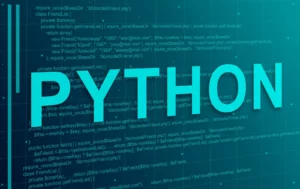
21. What are Python decorators?
Decorators are functions that modify the behavior of another function or method without changing its code. They enable code reuse and separation of concerns, often used for logging, access control, or memoization.
Example a simple decorator:
defdecorator(func):defwrapper():print("Before function") func()print("After function")return wrapper @decoratordefsay_hello():print("Hello!") say_hello()22. Define Python generators.
Generators are special iterators defined with functions using the yield keyword. They produce values lazily, generating one item at a time and preserving state between calls, which is memory efficient for large datasets.
23. Explain Lambda functions.
Lambda functions are anonymous, single-expression functions defined using the lambda keyword. They are used as quick throwaway functions without a formal definition.
add =lambda x, y: x + y print(add(2,3))# Output: 524. What is argument unpacking?
Using *args and **kwargs syntax allows passing a variable number of positional and keyword arguments to functions. This supports flexible APIs.
Example:
deffunc(*args,**kwargs):print(args)print(kwargs)25. Difference between is and ==.
ischecks if two variables reference the same object in memory.==checks if the values of two objects are equal regardless of their identity.
26. Explain exception handling.
Exceptions are runtime errors that disrupt program flow. Python provides try, except, else, and finally blocks to catch and handle exceptions gracefully, ensuring smoother execution and meaningful error messages.
27. What is the Global Interpreter Lock (GIL)?
The GIL is a mutex in CPython implementations that allows only one thread to execute Python bytecodes at a time. This prevents issues in memory management but limits multi-threaded CPU-bound parallelism.
28. What are Python’s built-in data structures?
Lists, tuples, dictionaries, and sets are core data structures providing efficient ways to store, retrieve, and manipulate collections of data.
29. Explain shallow vs deep copy.
- Shallow copy: Copies references to the objects; changes in nested mutable objects affect both original and copy.
- Deep copy: Recursively copies objects, producing independent duplicates, preventing shared references.
30. What is the multithreading limitation in Python?
Due to the GIL, Python threads cannot execute multiple CPU-bound operations truly in parallel, affecting performance. For CPU-intensive tasks, multiprocessing is preferred.
Master the foundation of Python Django for free now!
31. How to implement asynchronous programming in Python?
Using async def to declare asynchronous functions paired with await to pause execution until results are ready. The asyncio library facilitates event loop management for concurrent I/O tasks.
32. What is type hinting?
Type hinting allows annotating function signatures with expected parameter and return types to improve code readability, enabling static type checking tools to identify errors.
33. Python’s magic methods?
Special methods like __init__, __str__, __repr__, __add__ define object behavior for initialization, string representation, and operator overloading.
34. What is monkey patching?
It’s a dynamic modification of classes or modules during runtime to change or extend behavior without altering source code.
35. How does Python manage memory?
Python uses reference counting for memory management. Objects are deallocated when references drop to zero, complemented by cyclic garbage collector that cleans reference cycles.
36. Difference between pass, break, and continue.
pass: Does nothing; placeholder.break: Exits loop.continue: Skips current iteration, continues next.
37. How to debug Python code?
By using pdb module, IDE debuggers, or print statements to step through code, inspect variables, and locate issues.
38. Python testing frameworks?
unittest (built-in), pytest (popular third-party), and nose for writing and running test cases.
39. How to handle file I/O?
Using open() with modes ('r', 'w', 'a'), and the with statement ensures files close automatically.
40. Difference Python 2 vs Python 3?
Python 3 introduced syntax improvements like print as function, Unicode support, and removed deprecated features from Python 2, which reached end-of-life.
41. Lambda function example?
multiply =lambda x, y: x * y print(multiply(3,4))# Output: 1242. What is list slicing?
Extracting portions of lists using start:stop:step syntax, e.g., my_list[1:5:2].
43. Difference @staticmethod and @classmethod?
@staticmethoddoesn’t access class or instance.@classmethodaccesses class itself (cls parameter).
44. Managing dependencies?
Using pip to install packages and venv, virtualenv to isolate projects.
45. Purpose of with statement?
Ensures proper resource management (e.g., opening/closing files) even if errors occur.
46. What are f-strings?
Formatted string literals allowing inline expressions:
name ="HCL"print(f"Welcome {name}!")47. What is a metaclass?
A class of a class controlling class creation behavior.
48. How to optimize Python code?
Profile bottlenecks, use caching (functools.lru_cache), minimize global variables, and choose efficient algorithms.
49. What are coroutines?
Functions that can pause and resume, used for asynchronous programming.
50. How does Python handle modules and packages?
Python searches sys.path directories for modules/packages during import. It supports namespace packages for flexible module management.
Ace Your Python Journey with Entri’s AI-Powered Python Programming Course
Unlock the full potential of your Python skills with Entri’s comprehensive AI-integrated Python Programming Course. Designed for beginners and freshers aiming to break into top companies like HCL, this course takes you from fundamentals to advanced topics with interactive lessons powered by artificial intelligence.
- Hands-on coding practice: Real-time coding exercises with instant AI feedback.
- Placement Assistance: Get personalized support including resume review, interview preparation, and job connections to boost your hiring prospects at HCL and beyond.
- AI-powered learning path: Experience tailored learning schedules and personalized question recommendations that adapt to your strengths and weaknesses.
- Industry-relevant curriculum: Updated with the latest Python concepts, frameworks, and real-world projects.
Conclusion
Interview preparation is a journey—and mastering Python for your HCL interview opens doors to exciting tech career opportunities. This guide has equipped you with the latest, most relevant questions and tips to walk into your interview with confidence. For a deeper, structured, and AI-powered learning experience, enrolling in Entri’s Python Programming Course is the next smart step. Prepare smarter, learn faster, and get ready to join HCL’s innovative workspace with skills that truly stand out. Begin your Python mastery journey today!
Related Articles
🚀 Start Coding Today! Enroll Now with Easy EMI Options. 💳✨
Gain expertise in Django and open doors to lucrative opportunities in web development.
Start Learning With EMI Payment OptionsFrequently Asked Questions
Why do you want to join HCL?
At HCL, innovation and culture are vital to the organisation. In addition to helping the company grow, as an individual I would like to broaden my horizons. Furthermore, I am genuinely inspired by the company’s belief in “Ideapreneurship.” It excites me to have the chance to propose ideas for achieving the objectives of the organisation.
How do you get placed in HCL?
HCL Technologies holds campus recruiting drives to fill various career roles in their organisation with recent college graduates from India’s colleges. In addition, there are roads off-campus. The four rounds of selection are usually aptitude, GD, technical, and HR. In these rounds, you can get into HCL if you prepare well.
What is the salary for freshers in HCL?
Freshers at HCL Technologies typically earn between ₹ 1.6 and ₹ 4 lakhs per month in India.
Does HCL require advanced Python knowledge for freshers?
Basic to intermediate Python knowledge with good problem-solving skills is sufficient. Advanced topics and coding practice add an edge.
How important is knowledge of web frameworks?
Knowledge of Flask or Django is a plus, especially for roles involving web development.
Are coding challenges part of the HCL interview?
Yes, typically coding rounds involve algorithmic and data structure problems in Python.
Should I prepare for HR/group discussion rounds?
Absolutely, communication skills and cultural fit with HCL’s ideapreneurship philosophy are crucial.


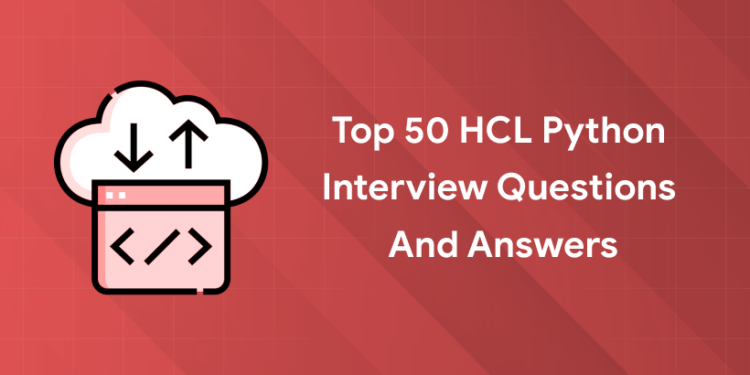
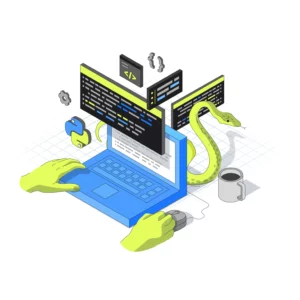





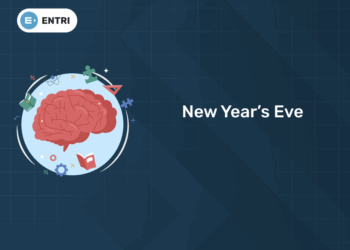
![Software Testing Basics Interview Questions [ 2024 Updated]](https://entri.app/blog/wp-content/uploads/2024/05/Software-Testing-Basics-Interview-Questions-2024-Updated-75x75.png)

